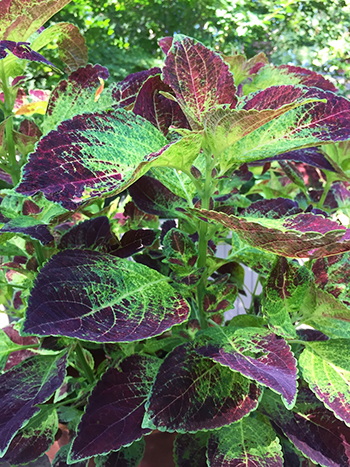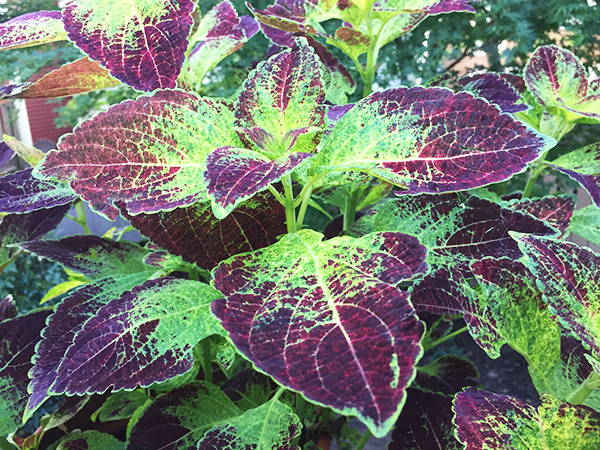 As we near mid-September, a dynamic and colorfully steady plant that perks up containers, hanging baskets, or resides in the ground is a cheerful sight. Consider the coleus with its color combinations of purples, reds, pinks, oranges, yellows, and greens. Its vibrant colors makes it an excellent partner to your annuals and perennials.
As we near mid-September, a dynamic and colorfully steady plant that perks up containers, hanging baskets, or resides in the ground is a cheerful sight. Consider the coleus with its color combinations of purples, reds, pinks, oranges, yellows, and greens. Its vibrant colors makes it an excellent partner to your annuals and perennials.
Now for the scientific stuff. Coleus is the common name for Solenostemon, which is part of the Lamiaceae genus of flowering plants. It is native to tropical Africa, Asia and Australia. There are about 60 species of coleus. It is grown almost entirely for its foliage and is easier to grow inside than outdoors.
To grow a coleus in a container, you’ll need:
- good quality potting soil that is moist, but not wet.
NOTE: Soil that is too dense may cause the roots to rot. - slow-release fertilizer mixed into the potting soil or a diluted liquid fertilizer.
NOTE: Potted plants require more feeding than does the same plant in a garden bed. - pot or planter with good drainage.
To keep your container or garden bed coleus thriving,
- put it in a sheltered location with full sun to partial shade.
- ensure it is well-hydrated.
- fertilize every 2 weeks during its active growth.
- pinch off shoots and flower stalks to encourage a good shape to the plant.
Pinching off shoots and flower stalks is very important with coleus plants! They grow like crazy and without such attention will lose their full, lush, brightly colorful foliage. Watch this video from Brightcove for a short “how to” lesson.
//players.brightcove.net/51750002001/BygqHecGhZ_default/index.html?videoId=702071880001
(If the video itself does not appear in your browser, here’s the link to see it.)
Some remedies for what may ail your coleus:
- Colors look washed out and dull? Move the plant to a shadier spot.
- Losing leaves? Move the plant to a sunnier spot.
- Mealybugs, scale insects, and whiteflies? Remove them with pest-specific spray or dust.
- Looks “leggy” with long stems and small leaves? Pinch back the stems and snip off any blooms. This encourages the plant to put energy into growing its foliage.
At summer’s end before the first frost, get ready for next year’s bounty.
- Cut some of your coleus stems.
- Place them in glasses filled with water, ensuring no leaves are beneath the water level so they won’t rot.
- Watch for the roots to begin and develop.
- Change the water to keep it clear.
- Leave the rooted stems in the glasses until they are ready to plant in the spring.

Coleus has been described as “a good-natured plant that is pretty hard to kill and quite easy to propagate.” In short, it has the perfect qualifications to be a mainstay in my garden and hopefully yours too!
